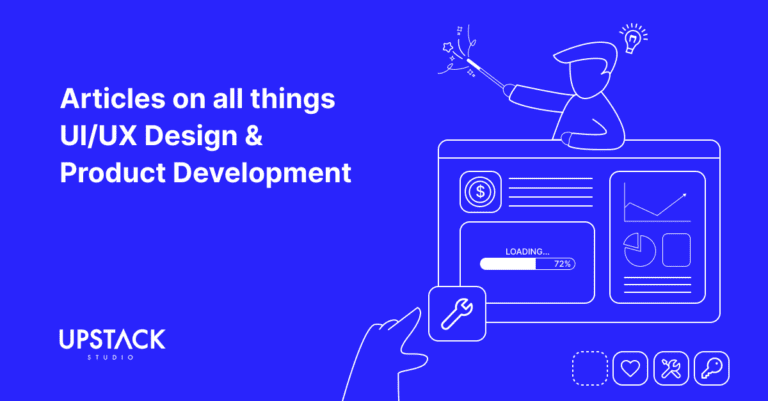Grocery apps come with unique hurdles—the logistics of fresh goods, last-minute orders, and unnaturally picky consumers. However, consider grocery deliveries are worth $770.90 billion in revenue and growing at a CAGR of 11.81% and suddenly it’s worth the trouble!
For now, let’s focus on building the app first, using Happy Fresh as our reference material.

By the end of this guide, you will learn:
- Why HappyFresh is our benchmark for grocery delivery
- Key features of a grocery app
- Technology stack options for a grocery app
- Best practices for user engagement and customer loyalty
- Strategies for launching and marketing your grocery app
Let’s begin.
Why Is HappyFresh the Gold Standard for Grocery Apps?
Indonesian-based HappyFresh was founded in 2014 before expanding to Malaysia and Thailand via user-friendly interface design that catered to ts three primary user groups:
1. Convenient Grocery Shopping Experience

HappyFresh makes grocery shopping convenient and stress-free for consumers by offering:
- Wide Selection: Access to groceries from top retailers like AEON, Giant, Tesco, and more.
- Personalized Shopping Experience: Users can engage with personal shoppers for tailored advice, ensuring the freshest picks.
- Fast Delivery: Customers enjoy quick and reliable delivery options, with same-day or next-hour delivery services available.
- Seamless Payments: A range of secure payment methods, including credit cards and e-wallets, provide flexibility and convenience.
2. Professional Shoppers and Riders

For personal shoppers and riders, HappyFresh offers:
- Efficient Workflow: Professional shoppers are trained to select the freshest items, ensuring a quality shopping experience for consumers.
- Flexible Delivery: Riders ensure timely delivery, offering convenience for customers and a smooth operational flow for the service.
- Employment Opportunities: By joining HappyFresh, shoppers and riders can work flexibly and efficiently, delivering high-quality service without the need for upfront investments.
3. Merchants

HappyFresh simplifies online expansion for grocery merchants by:
- Low-Risk Entry: Merchants can join HappyFresh without any upfront costs, offering their products online in a matter of weeks.
- Increased Market Reach: Merchants gain exposure to a larger customer base, helping them increase sales and grow their business.
- Comprehensive Service: HappyFresh handles everything from digitalizing product listings to processing payments and managing deliveries, allowing merchants to focus on their core business operations.
By catering to these three key user groups, HappyFresh offers a well-rounded, efficient solution that sets the standard for grocery delivery services.
You’ll want to do the same with your grocery app.
Find Gaps in Happy Fresh Offerings
While HappyFresh is a good platform for grocery shopping, there are areas where it can be improved.
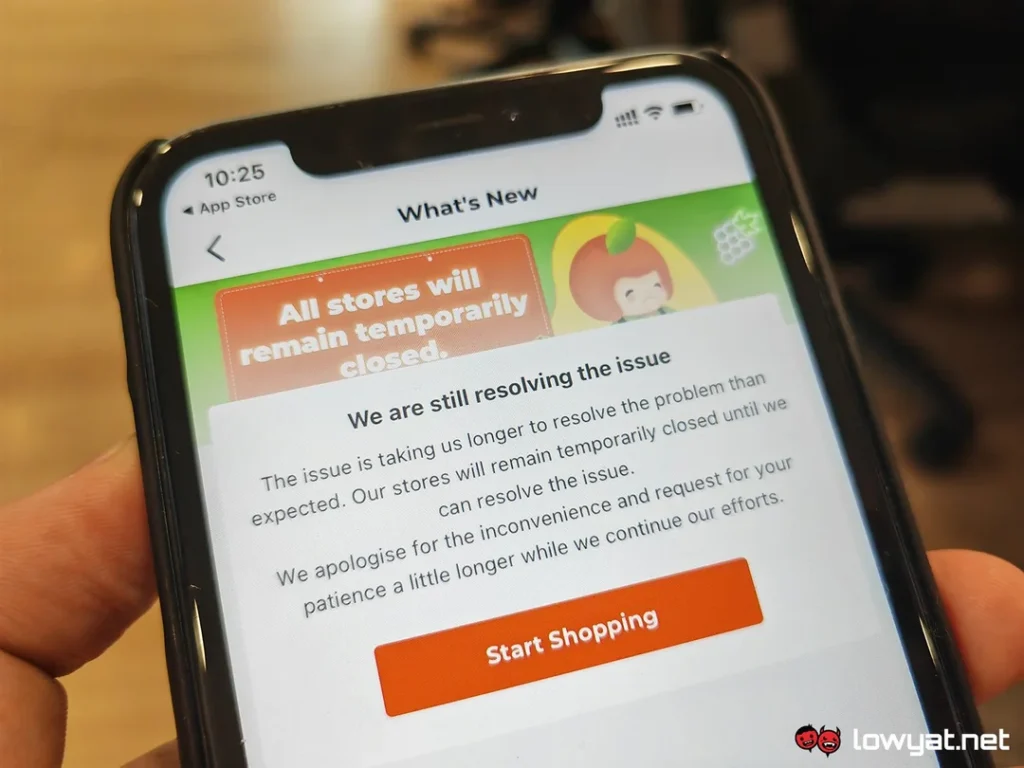
While we couldn’t find anything wrong with the app itself, keep in mind that you are aiming to build a SaaS business, and historically, the Happy Fresh business model has failed.
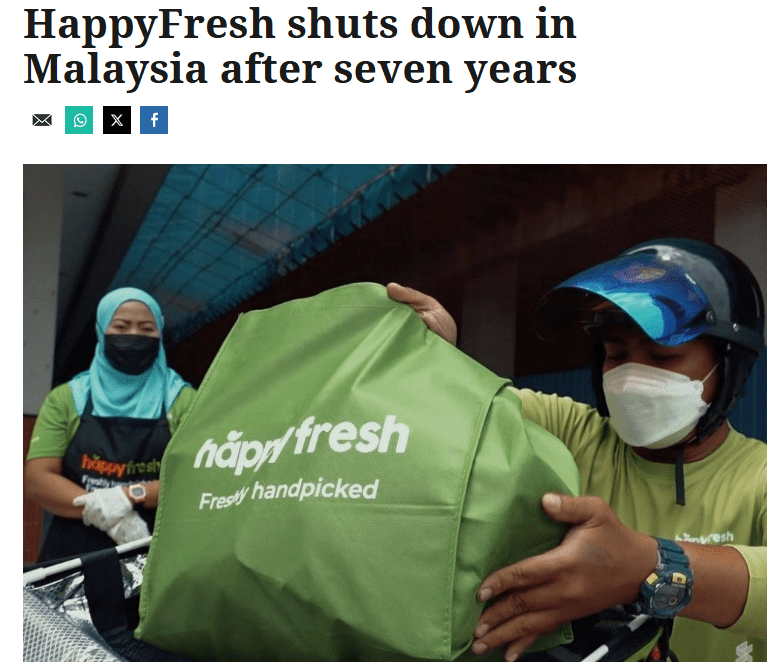
HappyFresh expanded aggressively as apps funded by venture capital are prone to do.
However, the company faced a high monthly burn rate and over US$97 million in debt.
The world economy began to slow, and after seven years, HappyFresh Malaysia closed down on September 22, 2022.
So while there may not be anything wrong with the app itself, bear in mind you may not want to grow your grocery delivery business too quickly.
Essential Features for a Grocery App
Here’s a list of essential features your grocery app should have, based on the needs of end consumers, professional shoppers and riders, and merchants:
For End Consumers
- Wide Product Selection: Access to a variety of products from trusted retailers (e.g., fresh produce, pantry essentials, household goods).
- Personal Shopper Assistance: Ability to engage with personal shoppers for tailored recommendations and advice.
- Fast Delivery Options: Same-day or next-hour delivery services for quick and reliable fulfillment.
- Multiple Payment Methods: Support for a variety of secure payment methods (credit/debit cards, e-wallets, etc.).
- Order Tracking: Real-time tracking of order status and delivery progress.
- User-Friendly Interface: Intuitive app navigation for easy browsing and shopping.
- Order History & Favorites: Ability to view previous orders and save frequently bought items for quicker reordering.
- Customizable Delivery Scheduling: Option to choose preferred delivery time slots for convenience.
For Professional Shoppers and Riders
- Efficient Order Management: Simple workflow to accept, process, and complete orders efficiently.
- Product Selection Guidelines: Detailed instructions or training on selecting the freshest or highest quality items.
- Delivery Tracking and Notifications: Rider navigation with delivery route optimization and real-time customer notifications.
- Payment and Compensation Integration: Clear payment processing and fair compensation for services rendered.
- Flexible Work Hours: Ability for shoppers and riders to manage their shifts based on availability.
- Performance Monitoring: Access to ratings and feedback from customers for continuous improvement.
For Merchants
- Easy Product Listing Management: A simple, efficient system for uploading and managing product listings.
- Sales Analytics: Insights into sales performance, customer preferences, and inventory tracking.
- Customer Reach and Marketing Tools: Access to a wider customer base through app exposure, including promotional tools.
- Order and Payment Processing: Streamlined system for managing orders and payments with minimal manual effort.
- Inventory Management: Real-time stock updates and alerts when products are running low.
- No Upfront Investment: A plug-and-play setup that enables merchants to start selling without significant initial costs.
- Customer Support: Dedicated support for resolving any issues related to orders, payments, or product listings.
By integrating these features, your grocery app can cater to the needs of all users and create a seamless, efficient experience for everyone involved.
Choosing a Technology Stack for Your Grocery App
First off, let’s see what Happy Fresh uses.
They are a multi billion dollar company with multiple apps and sites in different languages, so expect them to invest heavily into their technology.
Brace yourself!
Application & Data
| Technology | Purpose |
| Python | Programming language for server-side development |
| Node.js | JavaScript runtime for building scalable network applications |
| React | Frontend JavaScript library for building user interfaces |
| Java | Programming language for enterprise-level backend systems |
| NGINX | Web server and reverse proxy for handling traffic efficiently |
| PostgreSQL | Relational database system for storing structured data |
| MongoDB | NoSQL database for handling unstructured data |
| ES6 | JavaScript syntax used in modern web development |
| Redis | In-memory data structure store used for caching |
| Amazon S3 | Cloud storage service for storing and retrieving data |
| Ruby | Programming language for backend and web development |
| Firebase | Mobile and web application development platform |
| Spring Boot | Java-based framework for creating web applications |
| AWS Lambda | Serverless computing service for executing code in response to events |
| Kafka | Distributed event streaming platform for data pipelines |
| Golang | Programming language for high-performance systems |
| Amazon CloudFront | Content delivery network (CDN) for faster content delivery |
| Swift | Programming language for iOS and macOS app development |
| Rails | Web application framework written in Ruby |
| Amazon RDS | Managed relational database service in AWS |
| Kotlin | Programming language for Android development |
| Objective-C | Programming language for iOS app development |
| Memcached | Distributed memory caching system for high-speed data retrieval |
| Next.js | React framework for building server-rendered web applications |
| Apache Spark | Unified analytics engine for big data processing |
| Oracle | Relational database management system |
| Amazon SQS | Message queuing service for handling distributed systems |
| AWS Elastic Beanstalk | Platform as a service (PaaS) for deploying web apps |
| Airflow | Open-source platform to programmatically author, schedule, and monitor workflows |
| Sidekiq | Background job framework for Ruby |
| Amazon Aurora | Managed relational database service compatible with MySQL/PostgreSQL |
| Unicorn | HTTP server for Ruby applications |
Utilities
| Technology | Purpose |
| Google Maps | Mapping and location-based services |
| Elasticsearch | Distributed search and analytics engine |
| Amazon Route 53 | Domain name system (DNS) web service |
| Amazon SES | Email sending service |
| Mixpanel | Product analytics service for tracking user interactions |
| Segment | Customer data platform for managing analytics |
| Amazon SNS | Messaging service for sending notifications |
| Tableau | Data visualization software |
| Keycloak | Open-source identity and access management system |
| Databricks | Unified data analytics platform for data science and big data |
| Redash | Business intelligence tool for visualizing data |
| Amazon SageMaker | Managed service for building, training, and deploying machine learning models |
| Nexmo | Cloud communication platform for SMS and voice |
| Adyen | Payment processing platform for global transactions |
| Lokalise | Translation management platform for apps |
| Apptimize | Mobile A/B testing platform for optimization |
DevOps
| Technology | Purpose |
| Git | Distributed version control system for code management |
| Docker | Platform for developing, shipping, and running applications |
| Jenkins | Automation server for continuous integration and deployment |
| Bitbucket | Git repository management and collaboration platform |
| Terraform | Infrastructure as code tool for provisioning cloud resources |
| Grafana | Open-source platform for monitoring and visualizing metrics |
| Selenium | Automation testing tool for web applications |
| Sentry | Real-time error tracking and monitoring platform |
| Amazon EC2 | Scalable computing capacity in the cloud |
| AWS Elastic Load Balancer | Distributes incoming traffic across multiple instances |
| Datadog | Cloud monitoring and analytics platform |
| Cypress | End-to-end testing framework for web applications |
| TestFlight | Beta testing platform for iOS apps |
| Appium | Mobile automation framework for testing apps |
| Snyk | Security vulnerability scanning for code |
| Bitbucket Pipelines | Continuous delivery platform for Bitbucket |
| Bitrise | Continuous integration and delivery platform for mobile apps |
| Karate DSL | API testing tool for performance and security testing |
| Solarwinds | Network monitoring and management tools |
| AWS X-Ray | Distributed tracing for debugging and analyzing microservices |
| Sleuth | Performance monitoring and diagnostics for cloud-based systems |
Building a grocery app with this tech stack will easily incur development costs of $100,000 to $500,000+ for the first phase, with ongoing costs for app maintenance, updates, and hosting.
If this is out off your budget, here’s a more stripped down, startup-friendly tech stack.
Simplified Tech Stack for Startups
Here’s a simplified tech stack for your grocery app:
| Category | Technology | Purpose |
| Frontend | React / React Native | Build web and mobile app interfaces with reusable components. |
| Backend | Node.js + Express | Server-side logic, handling API requests and routing. |
| Database | PostgreSQL / MongoDB | Store and manage data, relational or document-based. |
| Cloud Hosting | AWS Free Tier / Heroku | Cost-effective cloud infrastructure for hosting your app. |
| Payments | Stripe / Razorpay | Secure payment processing, including credit cards and wallets. |
| Real-Time Notifications | Firebase | Manage push notifications and real-time data sync. |
| Authentication | Firebase Authentication / Auth0 | User authentication and login management. |
| APIs & Integrations | Zapier / Integromat | Automate workflows and integrate third-party services. |
| Version Control | GitHub / GitLab | Manage code versions and collaborate with your development team. |
| Analytics | Google Analytics | Track user interactions, behaviors, and conversions. |
This stack is designed to be cost-effective and flexible for your startup, allowing you to build and
However, cheaper doesn’t mean cheap, and expect to pay $30,000 – $70,000 for a grocery app, for initial MVP development, depending on the development team’s location.
Grocery App Features: Best Practices for User Engagement and Retention
1. Push Notifications
Keep customers engaged by sending timely push notifications about special offers, price drops, order updates, and other relevant information. This helps maintain interest and increase conversions.
2. Personalization
Leverage AI technology to provide personalized recommendations and offers based on user preferences and past shopping behaviors. This creates a more tailored shopping experience, enhancing customer satisfaction.
3. Repeat Order
Simplify the process for repeat customers by allowing them to reorder previous purchases with just a few taps. This feature enhances convenience and encourages customer loyalty.
4. Search Filters
Allow customers to easily search and filter through a wide range of food and grocery items. Provide intuitive sorting options (by price, popularity, etc.) to help users find what they need quickly.
5. Order Tracking
Implement live order tracking so that customers can monitor their orders in real time. Keeping customers updated with the status of their order enhances transparency and builds trust.
6. App Gamification
Integrate gamification features like rewards, badges, or challenges to encourage user engagement, boost customer retention, and drive more sales through interactive and fun elements.
7. Delivery Scheduling
Allow customers to schedule deliveries at a convenient time, reducing the risk of missed deliveries or last-minute changes. This feature provides flexibility, ensuring that customers receive their groceries when it works best for them.
8. Multiple Payment Options
Offer a variety of payment methods to cater to different preferences. This could include credit/debit cards, e-wallets, or even cash on delivery, ensuring convenience and flexibility for your customers.
9. Feedback & Ratings
Enable customers to leave feedback and ratings after their purchases. This provides valuable insights into customer experiences and helps improve services, while also building credibility for your app.
Marketing Timeline for Your Grocery App

Pre-launch Phase (1-2 months before launch)
- Teaser Campaigns: Build excitement with teaser content across social media platforms to spark curiosity about your upcoming app.
- Landing Page: Create a dedicated landing page that highlights key app features, benefits, and provides an email sign-up option for early access or updates.
- Early Bird Discounts: Offer special discounts or promotions to users who sign up early, incentivizing them to download and start using the app as soon as it’s launched.
Launch Phase (Launch day to 1 month after launch)
- Influencer Partnerships: Collaborate with local influencers in the grocery or lifestyle space to create buzz and promote the app through reviews, unboxings, or personal experiences.
- Press Release: Distribute a press release to media outlets announcing the launch, its unique features, and the benefits it offers to users.
- App Store Optimization: Optimize your app’s listing on both Google Play and the App Store with relevant keywords, screenshots, and an enticing description to improve visibility.
Post-launch Phase (1-3 months after launch)
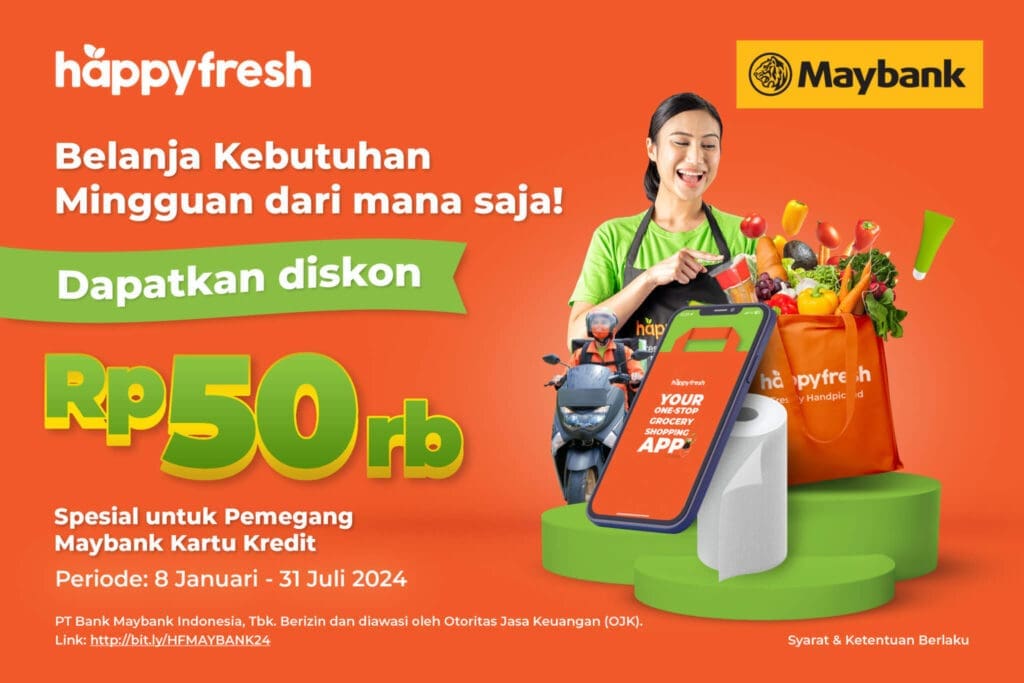
- User-Generated Content: Encourage customers to share their shopping experiences on social media. Run contests or feature customer reviews and testimonials to build trust and attract new users.
- Local SEO: Focus on local search engine optimization to ensure your grocery app ranks high in search results for location-based queries.
- Referral Programs: Launch referral programs where users can get rewards or discounts for referring new customers to the app, helping to spread word-of-mouth marketing.
- Paid Advertising: Use targeted ads on social media and search engines to increase app visibility and reach a larger audience.
By following this app marketing strategy, you can generate a steady stream of interest before, during, and after your grocery app’s launch, ensuring a successful entry into the market.
Analyzing and Adapting to User Feedback
Time to collect insights from users and make iterative updates to improve the app experience.

Gathering Feedback
- In-app Surveys: Use short surveys to understand user experience.
- User Reviews and Ratings: Track feedback in app stores to identify strengths and weaknesses.
- Customer Support Interactions: Address issues raised in support tickets to improve app functionality.
- Social Media and Online Communities: Monitor social media for user sentiment and suggestions.
- Behavioral Analytics: Use tools like Google Analytics to track app usage and user behavior.
Implementing Changes
- Prioritize Issues: Use frameworks like MoSCoW to prioritize changes based on impact.
- Regular App Updates: Continuously update the app based on feedback and new feature requests.
- Testing New Features: Use A/B testing or beta releases for feature validation.
- Transparency and Communication: Notify users about updates to show you value their feedback.
- Continuous Improvement: Keep gathering feedback to ensure ongoing improvements.
Do this forever and ever, and you might have the next Happy Fresh!
Conclusion
Building a grocery app like HappyFresh involves careful planning and even more careful execution.
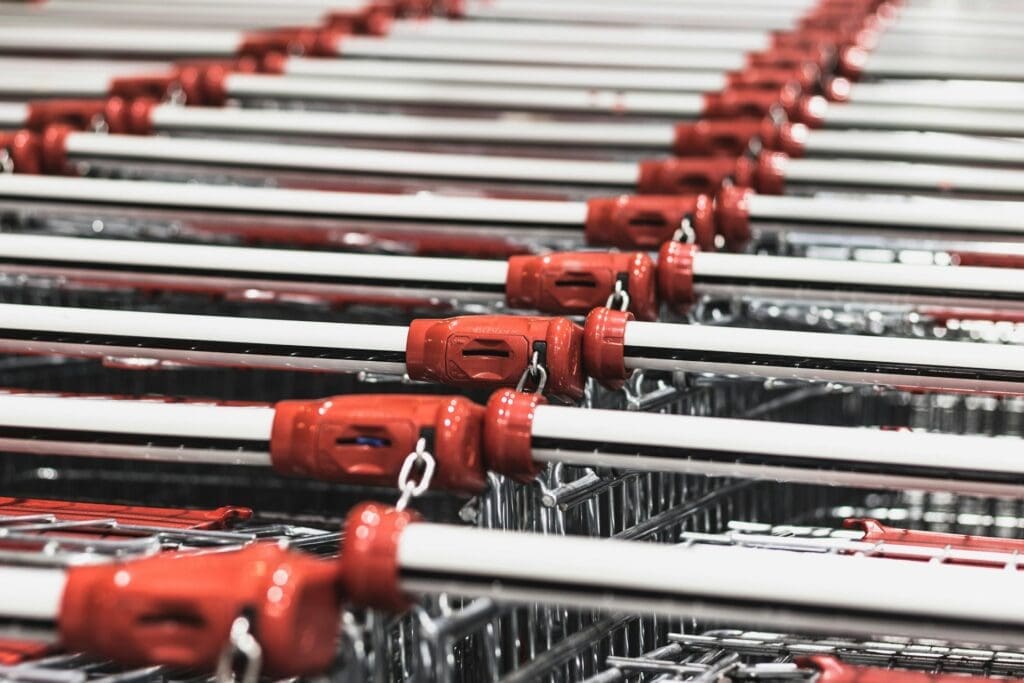
All this guide can do is equip you with the knowledge to launch a grocery app.
Time for you to build the next essential shopping tool!
If you’re looking to build a mobile application, check out our portfolio of past projects and contact us if you like what you see. Also, consider joining our mailing list for a one-stop resource on everything from micro-SaaS validation all the way to execution and promotion. Get a nifty list of questions to ask app developers when you sign up!
App Developer Interview Questions Template
Download this template now so you know exactly what to ask App Development Agencies! Let us know where should we send it through the form below.

